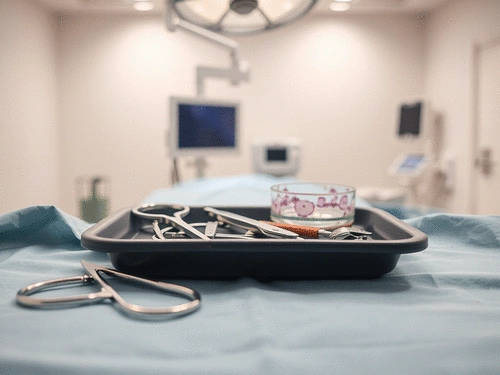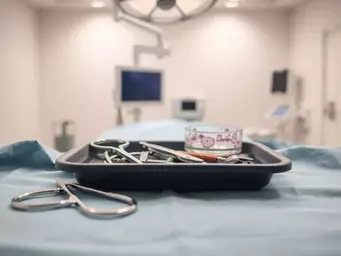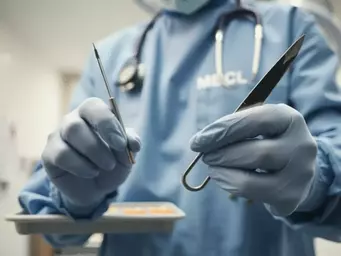In the intricate world of healthcare, understanding surgical procedures can significantly ease anxiety. Dr. Evelyn Carter, a seasoned pathologist, highlights the importance of knowing the types of biopsies available. By effectively communicating the benefits and processes, patients can navigate their health decisions with confidence.
What You Will Learn
- The primary distinction between excisional and incisional biopsies: complete removal vs. partial sampling of lesions.
- Clinical scenarios indicating when biopsies are necessary, such as evaluating tumors or diagnosing lesions.
- What to expect during a biopsy procedure, including potential discomfort and recovery times.
- The significance of patient education in reducing anxiety and empowering informed health decisions.
Surgical Biopsy Types and Their Impact
Delve into the distinctions between excisional and incisional biopsies, their indications, and overall impact on patient outcomes.
Excisional Biopsy: Complete Removal
The entire lesion is removed along with a margin of surrounding healthy tissue, providing comprehensive tissue samples for thorough analysis.
- ✓ Entire lesion removed
- ✓ Comprehensive analysis
- ✓ Guides treatment decisions
Incisional Biopsy: Partial Removal
Only a part of the lesion is excised, typically used when the lesion is too large or when complete removal would cause significant cosmetic changes.
- ● Part of lesion removed
- ● Minimizes patient risk
- ● Less invasive option
Understanding Surgical Biopsies: A Comprehensive Overview
When it comes to understanding surgical biopsies, it’s crucial to grasp the two primary types: excisional and incisional biopsies. These procedures may sound intimidating, but they play a vital role in diagnosing and treating various conditions. An excisional biopsy involves the complete removal of a suspicious area, while an incisional biopsy only takes a portion of the lesion for examination. Grasping these distinctions helps demystify the process and prepares you for what to expect.

In clinical contexts, the decision to perform either an excisional or incisional biopsy depends on several factors, including the size and location of the lesion. For further reading on biopsy procedures, the National Center for Biotechnology Information (NCBI) provides detailed information, highlighting their importance in diagnostics. Understanding these differences can empower patients as they navigate their healthcare journeys.
Defining Surgical Biopsy: Excisional vs. Incisional
- Excisional Biopsy: The entire lesion is removed along with a margin of surrounding healthy tissue.
- Incisional Biopsy: Only a part of the lesion is excised, typically used when the lesion is too large or when the removal would cause significant cosmetic changes.
In my experience, patients often have concerns about which type of biopsy is appropriate for their situation. It’s essential to discuss these options with your healthcare provider to better understand the implications of each choice. Resources like OncoLink offer additional insights into incisional and excisional biopsies, which can be helpful in these discussions.
Indications for Biopsy Procedures
There are various clinical scenarios in which excisional and incisional biopsies are indicated. These procedures are often performed to evaluate tumors, diagnose lesions, or confirm suspicious findings from imaging tests. For example, if a doctor suspects a tumor based on imaging, an excisional biopsy may be recommended to assess its characteristics fully.
- Evaluating a suspicious mass or tumor
- Determining the cause of unexplained symptoms
- Diagnosing skin lesions or rashes
Recognizing when a biopsy is warranted helps alleviate fears surrounding the procedure. The goal is to ensure accurate diagnosis and appropriate treatment, paving the way for a clearer path to recovery. The American Cancer Society also offers comprehensive information on different biopsy types, aiding patients in understanding when these procedures are necessary.
Patient Education on Biopsy Procedures
At What Is A Biopsy, we strive to empower patients with essential knowledge about biopsy procedures. It’s completely normal to have questions like, “What should I expect during the biopsy?” or “How will this affect my recovery?” Understanding the process can significantly reduce anxiety and enhance your overall experience.
- Expect to meet a friendly healthcare team who will explain each step.
- Prepare for potential mild discomfort, but most patients report it is manageable.
- Recovery times can vary, so it’s important to have a follow-up plan.
By educating yourself about the biopsy process, you're taking an important step towards making informed decisions about your health. Remember, being proactive and asking questions can lead to a much more comfortable experience.
Step-by-Step Breakdown of Biopsy Procedures
Now that we understand the basics of surgical biopsies, let's dive into the specific procedures. This section will cover the methodologies for excisional and incisional biopsies, ensuring you're well-informed about what to expect.
We Want to Hear From You!
What are your biggest concerns regarding surgical biopsies? Share your thoughts below:
Frequently Asked Questions About Surgical Biopsies
Below are some common questions patients often ask about excisional and incisional biopsies:
- Q: What is the main difference between an excisional and an incisional biopsy?
- A: An excisional biopsy involves removing the entire suspicious lesion along with a margin of healthy tissue. An incisional biopsy, on the other hand, only removes a portion of the lesion for examination, typically when the lesion is large or complete removal is not feasible.
- Q: When is an excisional biopsy typically recommended?
- A: Excisional biopsies are often recommended when a suspicious mass or tumor needs to be fully evaluated, for definitive diagnosis, and to guide treatment decisions, especially if the lesion is small enough for complete removal.
- Q: Why might an incisional biopsy be preferred over an excisional biopsy?
- A: An incisional biopsy is preferred when the lesion is too large for complete removal without significant cosmetic or functional impact, or when only a sample is needed to confirm a diagnosis before deciding on a larger treatment plan.
- Q: What should I expect during the recovery period after a surgical biopsy?
- A: Recovery times vary depending on the biopsy type and location. You may experience mild discomfort, swelling, or bruising. Your healthcare provider will give you specific post-procedure care instructions, including wound care and activity restrictions.
- Q: How can patient education help reduce anxiety related to biopsies?
- A: Understanding the procedure, its purpose, what to expect during and after, and the implications of the results can significantly reduce anxiety. Informed patients feel more in control and are better equipped to make confident decisions about their health.
Summary of Surgical Biopsy Procedures and Their Impact
In the realm of medicine, excisional and incisional biopsies hold significant importance. These surgical procedures are essential for accurately diagnosing various conditions, particularly tumors and lesions. They allow healthcare providers to gain insights into the cellular makeup of suspicious areas, guiding treatment decisions and improving patient outcomes.

Through excisional biopsies, entire tumors can be removed and analyzed, which gives a comprehensive view of the disease. On the other hand, incisional biopsies target specific tissue areas for diagnosis when complete removal isn’t feasible. Both techniques play a critical role in patient management, ensuring that we can deliver tailored care based on solid evidence.
- Excisional Biopsy: Provides complete tissue samples for thorough analysis.
- Incisional Biopsy: Useful when complete removal is not possible, minimizing patient risk.
- Impact on Patient Outcomes: Facilitates timely and accurate diagnoses, which can lead to more effective treatment strategies.
Understanding these procedures not only reduces patient anxiety but also empowers them to engage in their healthcare decisions actively. Knowledge is a powerful tool, and at What Is A Biopsy, we strive to provide patients with the information they need to feel confident in their medical journey.
Encouraging Informed Decisions for Patients
It's essential for patients to understand their biopsy options thoroughly. With so many types of biopsies available, including surgical, core needle, and fine needle aspirations, having the right information can make a world of difference. At What Is A Biopsy, we believe that informed patients are better equipped to make decisions that align with their health goals.
When considering a biopsy, patients often have questions. Here are some common FAQs that can guide your decision-making:
- What type of biopsy is best for my situation?
- What are the risks and benefits of each biopsy type?
- How will my healthcare provider interpret the results?
- What should I expect during recovery?
By addressing these questions upfront, patients can foster a more collaborative relationship with their healthcare providers. Remember, it’s perfectly okay to ask for clarification and express any concerns you may have!
Final Thoughts on Biopsy Techniques
In conclusion, understanding biopsy techniques is crucial in navigating the complexities of healthcare. I encourage readers to consult with their healthcare professionals for personalized advice tailored to their specific circumstances. Each patient's journey is unique, and exploring all available options can lead to more informed and confident decisions.
At What Is A Biopsy, we are dedicated to demystifying these processes to help alleviate any fears and uncertainties surrounding biopsies. Remember, knowledge reduces anxiety, and we are here to empower you every step of the way!
Recap of Key Points
Here is a quick recap of the important points discussed in the article:
- Types of Biopsies: Understand the difference between excisional (complete removal) and incisional (partial removal) biopsies.
- Indications: Biopsies are indicated for evaluating tumors, diagnosing lesions, and confirming imaging findings.
- Patient Education: Patients should be informed about what to expect during the procedure and recovery process to alleviate anxiety.
- Impact on Outcomes: Timely and accurate diagnoses from biopsies lead to more effective treatment strategies.
- Informed Decisions: Patients should actively engage with healthcare providers and ask questions to understand their options better.









